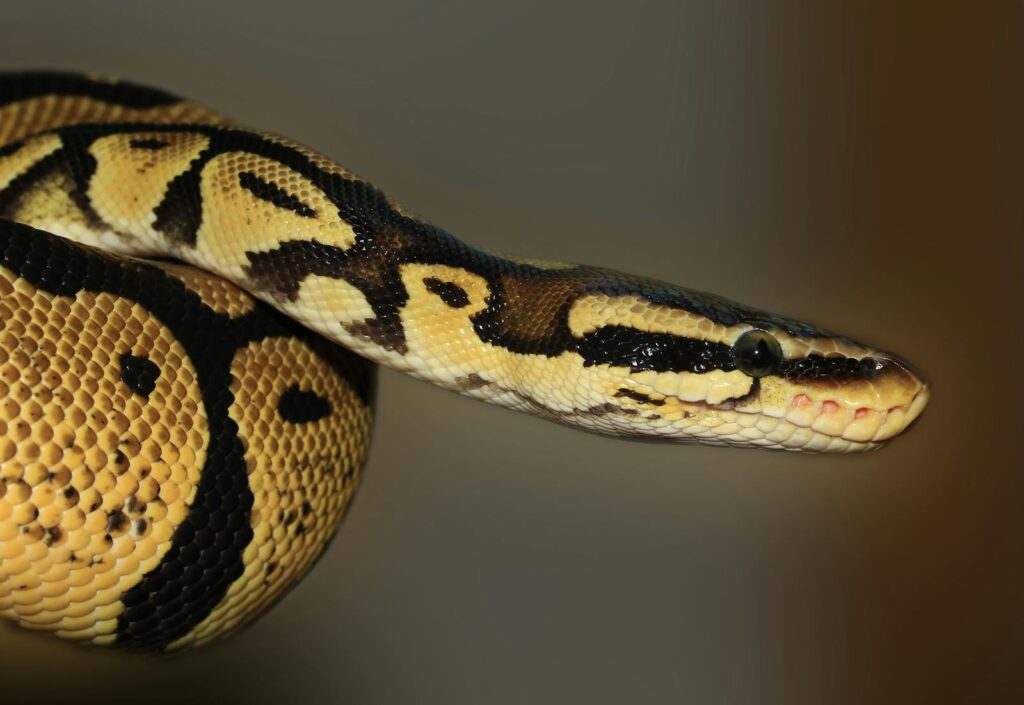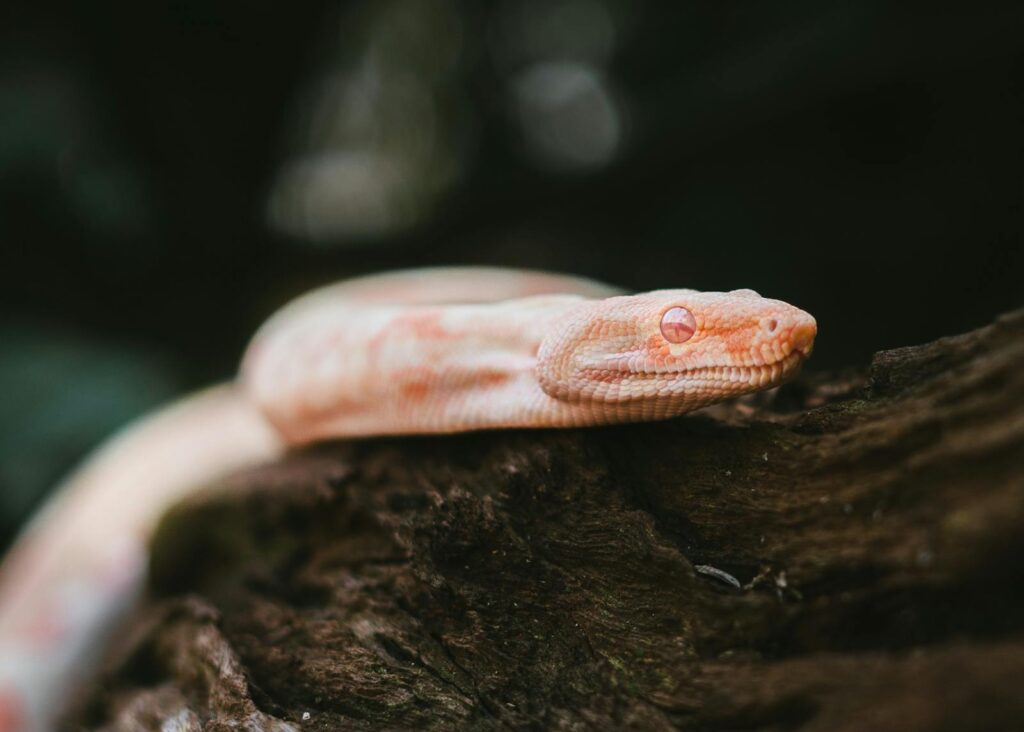Snakes are remarkable creatures that have evolved unique adaptations to survive in diverse habitats around the world. Among their many fascinating characteristics is their ability to perceive sound despite lacking external ears like humans and most other vertebrates. This apparent contradiction – hearing without ears – represents one of nature’s most ingenious solutions to sensory challenges. While humans rely on external ear structures to capture sound waves, snakes have developed alternative mechanisms to detect vibrations and perceive their acoustic environment. This article explores the remarkable ways snakes “hear” without conventional ears, delving into their specialized anatomy, the science behind their perception, and how these adaptations help them navigate their world.
The Myth of the Deaf Snake

For generations, snakes were widely considered deaf creatures, completely unable to hear the world around them. This misconception stemmed from their lack of visible external ears, which led early naturalists to assume they were incapable of sound perception. However, modern research has thoroughly debunked this myth, revealing that snakes can indeed detect sound, though in ways dramatically different from humans and other mammals. Rather than being deaf, snakes have evolved alternative sensory pathways that allow them to perceive their acoustic environment. This fundamental misunderstanding persisted well into the 20th century until scientific studies began to unravel the complex sensory capabilities of these reptiles.
Traditional Hearing vs. Snake Hearing

Traditional hearing in humans and most vertebrates involves a complex process where sound waves are captured by the outer ear, conducted through the middle ear via tiny bones, and then translated into neural signals in the inner ear before being processed by the brain. Snakes, however, lack this conventional auditory apparatus – they have no external ear openings, no eardrum, and no middle ear structures to process airborne sounds in the typical manner. Instead, snake hearing relies primarily on bone conduction and specialized internal structures that detect vibrations transmitted through solid surfaces. This fundamental difference means that while snakes cannot hear airborne sounds in the same way humans do, they possess remarkable sensitivity to ground-borne vibrations. Their hearing is more specialized and targeted toward the specific sounds most relevant to their survival and hunting strategies.
The Inner Ear Structure of Snakes

Despite lacking external ears, snakes do possess sophisticated inner ear structures that play a crucial role in their ability to detect sound. Their inner ear contains a cochlea, though it’s more primitive than that found in mammals, and a vestibular apparatus that helps with balance and spatial orientation. Connected to the jaw through the quadrate bone, this inner ear system can pick up vibrations that travel through a snake’s body. The cochlear duct in snakes contains hair cells similar to those in human ears, which transform mechanical vibrations into electrical signals that the brain can interpret. These specialized structures are directly connected to the snake’s skull bones, creating an effective conduction pathway for vibrations from the ground or solid objects. Remarkably, this inner ear system is sensitive enough to detect prey movements, predator approaches, and even some environmental sounds that travel through solid mediums.
Jaw Conduction: The Primary Pathway

The most crucial mechanism in snake hearing involves their jawbones, which serve as the primary conductors of vibrations to their inner ear. When a snake places its jaw against the ground or a solid surface, vibrations travel through the jawbone to the quadrate bone, which connects directly to the inner ear apparatus. This jaw-to-ear connection essentially transforms the snake’s entire lower jaw into a giant sensory organ for detecting vibrations. Experiments have demonstrated that snakes are most responsive to sounds when their jawbones are in contact with vibrating surfaces. This specialized adaptation allows them to “hear” prey moving underground or detect predators approaching from a distance. The remarkable sensitivity of this system means that snakes can detect subtle vibrations that would be imperceptible to many other animals, giving them a significant advantage in their ecological niches.
The Role of the Quadrate Bone

The quadrate bone plays a pivotal role in snake hearing, serving as the crucial bridge between external vibrations and the snake’s inner ear. This specialized bone, located at the back of the jaw, connects the lower jawbone (mandible) to the skull and inner ear structures. When vibrations travel through the ground or air and reach the snake’s body, the quadrate bone picks up these vibrations and transmits them to the inner ear. The unique mobility of this bone in snakes, compared to other reptiles, enhances its ability to conduct vibrations effectively. Research has shown that the quadrate bone can detect a wide frequency range, though snakes are particularly sensitive to low-frequency vibrations between 50 and 1,000 Hz. This frequency range corresponds perfectly with the typical vibrations produced by potential prey moving through soil or leaf litter, highlighting how this adaptation is finely tuned to the snake’s predatory lifestyle.
Sensitivity to Vibrations

Snakes display remarkable sensitivity to vibrations, with some species capable of detecting extremely subtle movements through various substrates. This sensitivity varies among species, with burrowing and ground-dwelling snakes generally showing greater acuity for detecting vibrations through soil and rock than arboreal species. Experimental studies have revealed that certain snakes can detect prey movements from several meters away through ground vibrations alone. This extraordinary sensitivity helps explain how snakes can locate prey hidden underground or concealed in dense vegetation. The python family, for instance, shows particular adeptness at using vibration detection to locate mammals moving through their habitat. Even more impressive is the snake’s ability to filter out irrelevant background vibrations, focusing only on those that might indicate the presence of prey or predators – a remarkable feat of neural processing that scientists are still working to fully understand.
Frequency Range and Limitations

The hearing capabilities of snakes are specialized within a specific frequency range, primarily concentrated in the lower frequencies between 40 Hz and 1,000 Hz. This range is significantly narrower than human hearing, which typically spans from 20 Hz to 20,000 Hz, but it’s perfectly adapted to the snake’s ecological needs. Within their optimal frequency range, snakes show remarkable sensitivity, particularly to ground-borne vibrations that might indicate prey movement. However, they demonstrate significant limitations when it comes to detecting higher-frequency airborne sounds that don’t create sufficient ground vibrations. This explains why snakes might appear unresponsive to certain sounds that would startle other animals – they’re simply outside their perceptible range. Research has also shown that different snake species exhibit varying sensitivities to different frequencies, reflecting their diverse hunting strategies and habitats across the world.
Complementary Sensory Systems

Snakes rely on a sophisticated integration of multiple sensory systems to build a comprehensive picture of their environment, with vibration detection being just one component of their sensory arsenal. Many snake species possess heat-sensing pit organs that detect infrared radiation, allowing them to locate warm-blooded prey even in complete darkness. Their forked tongues collect chemical particles from the air and transfer them to the vomeronasal organ (Jacobson’s organ) in the roof of the mouth, providing detailed chemical information about their surroundings. Some species also have excellent vision, particularly adapted for their specific hunting needs. These complementary sensory systems work in concert with vibration detection, allowing snakes to create a multi-dimensional understanding of their environment. This sensory integration is particularly evident when observing hunting behavior, where snakes seamlessly combine chemical, thermal, visual, and vibration cues to locate and capture prey with remarkable precision.
Scientific Research and Discoveries

The study of snake hearing has evolved dramatically over the past century, with significant breakthroughs reshaping our understanding of these remarkable creatures. Early research by Hans-Werner Honegger in the 1970s first challenged the notion that snakes were deaf, demonstrating neural responses to airborne sounds in certain frequency ranges. In the 1980s and 1990s, groundbreaking work by A.S. Hartline revealed the importance of bone conduction in snake hearing, particularly through the jaw. More recent research using advanced brain imaging techniques has mapped how sound vibrations are processed in the snake’s brain, showing specialized neural pathways dedicated to vibration detection. In 2021, a landmark study published in PLOS ONE demonstrated that snakes can indeed respond to airborne sounds, though through body-conducted vibrations rather than traditional hearing pathways. These ongoing scientific investigations continue to uncover new aspects of snake sensory biology, gradually piecing together the complex puzzle of how these earless creatures perceive their acoustic environment.
Evolutionary Advantages

The unique hearing mechanism of snakes represents a remarkable evolutionary adaptation that offers several distinct advantages in their ecological niches. By sensing vibrations through their bodies and jaws, snakes can detect the movements of underground prey that would be impossible to locate through conventional hearing or vision alone. This adaptation is particularly beneficial for ambush predators like vipers and pythons, allowing them to remain motionless while monitoring their surroundings for potential meals. The system also serves as an effective early warning mechanism against approaching predators, giving snakes valuable time to retreat to safety. From an evolutionary perspective, this specialized hearing system likely developed as snakes adapted to their limbless, ground-hugging lifestyle, where traditional hearing would have been less advantageous than vibration detection. This sensory adaptation has contributed significantly to the remarkable success of snakes, which have colonized nearly every terrestrial habitat on Earth except the polar regions.
Species Variations in Hearing Abilities

Not all snakes have identical hearing capabilities, with significant variations existing across different species based on their evolutionary history and ecological specializations. Burrowing snakes, such as blind snakes (family Typhlopidae), tend to have highly developed vibration sensitivity that helps them navigate underground and detect prey movements through soil. Pit vipers, including rattlesnakes and copperheads, combine excellent vibration detection with their infrared-sensing pit organs to create a comprehensive sensory picture that makes them formidable nocturnal hunters. Arboreal species like tree boas and vine snakes show adaptations more suited to detecting vibrations through branches and vegetation rather than ground substrates. Desert-dwelling species often display enhanced sensitivity to low-frequency vibrations that travel efficiently through sand. Research comparing different snake families has revealed that these variations in hearing ability are directly correlated with hunting strategies, preferred habitats, and primary prey types, highlighting how sensory systems evolve to match specific ecological demands.
Practical Implications for Human-Snake Interactions

Understanding how snakes perceive sound has important implications for human-snake interactions, particularly in contexts of safety and conservation. The knowledge that snakes primarily detect ground vibrations rather than airborne sounds explains why techniques like “snake stomping” (creating heavy footfalls when walking in snake territory) can be effective warning methods – the vibrations travel through the ground, alerting snakes to human presence and giving them time to retreat. Conservation efforts have incorporated this understanding by developing vibration-generating devices to safely deter snakes from human-occupied areas without harming them. For wildlife photographers and researchers, this knowledge informs field techniques, suggesting the importance of minimizing ground vibrations when attempting to observe snakes in their natural habitat. In agricultural settings, some farmers have experimented with vibration-generating devices around crop perimeters to discourage venomous snakes while allowing them to continue their valuable role as rodent controllers in surrounding areas.
Future Research Directions

The field of snake sensory biology continues to evolve, with several promising research directions poised to deepen our understanding of how these remarkable reptiles perceive their acoustic environment. Advanced neuroimaging techniques are allowing scientists to map the neural pathways involved in vibration processing with unprecedented detail, potentially revealing how different types of vibrations are categorized and prioritized by the snake brain. Biomechanical studies focusing on the precise way vibrations travel through different snake anatomical structures may help explain species-specific variations in hearing sensitivity. Some researchers are exploring the potential interaction between the snake’s vibration detection system and other sensory modalities, investigating how multisensory integration creates a cohesive perception of the environment. There’s also growing interest in how environmental factors like substrate type, humidity, and temperature might affect vibration transmission and detection. As research technologies advance, our understanding of snake sensory biology will undoubtedly continue to expand, potentially offering new insights that could inform biomimetic technologies inspired by these remarkable evolutionary adaptations.
Conclusion

The snake’s ability to “hear” without conventional ears represents one of nature’s most elegant sensory adaptations. Through specialized jaw structures, inner ear mechanisms, and remarkable sensitivity to vibrations, these reptiles have developed an alternative but highly effective way to perceive their acoustic environment. This adaptation allows them to detect prey, avoid predators, and navigate their surroundings with remarkable precision, despite lacking the external ear structures found in most vertebrates. As scientific research continues to unravel the complexities of snake sensory biology, we gain a deeper appreciation for the diverse ways that evolution has solved the challenge of sound perception across different species. The snake’s unique hearing mechanism stands as a powerful reminder that nature often finds unexpected solutions to sensory challenges, creating diverse pathways for organisms to thrive in their ecological niches.





